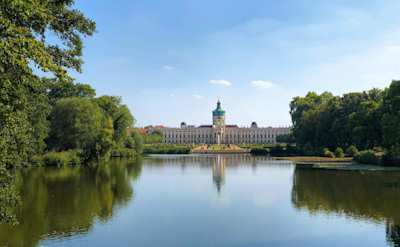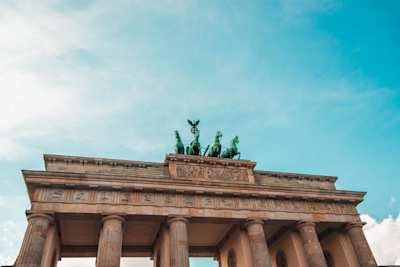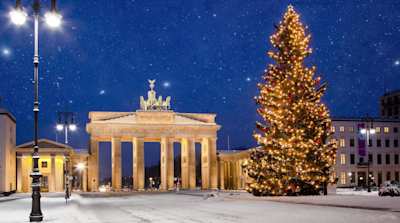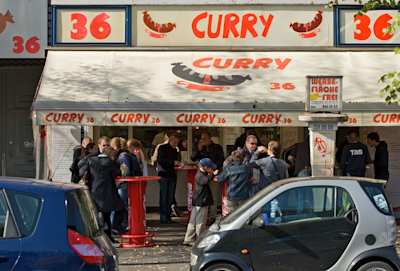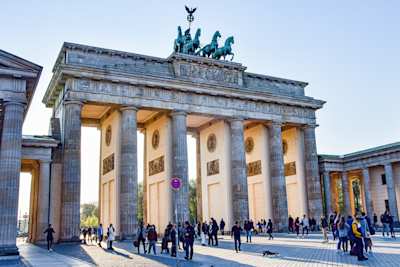How to Make the Most of Your Weekend in Berlin
Planning a weekend trip to Berlin? Here we're sharing our expert tips on how best to spend your short amount of time in the city.
~
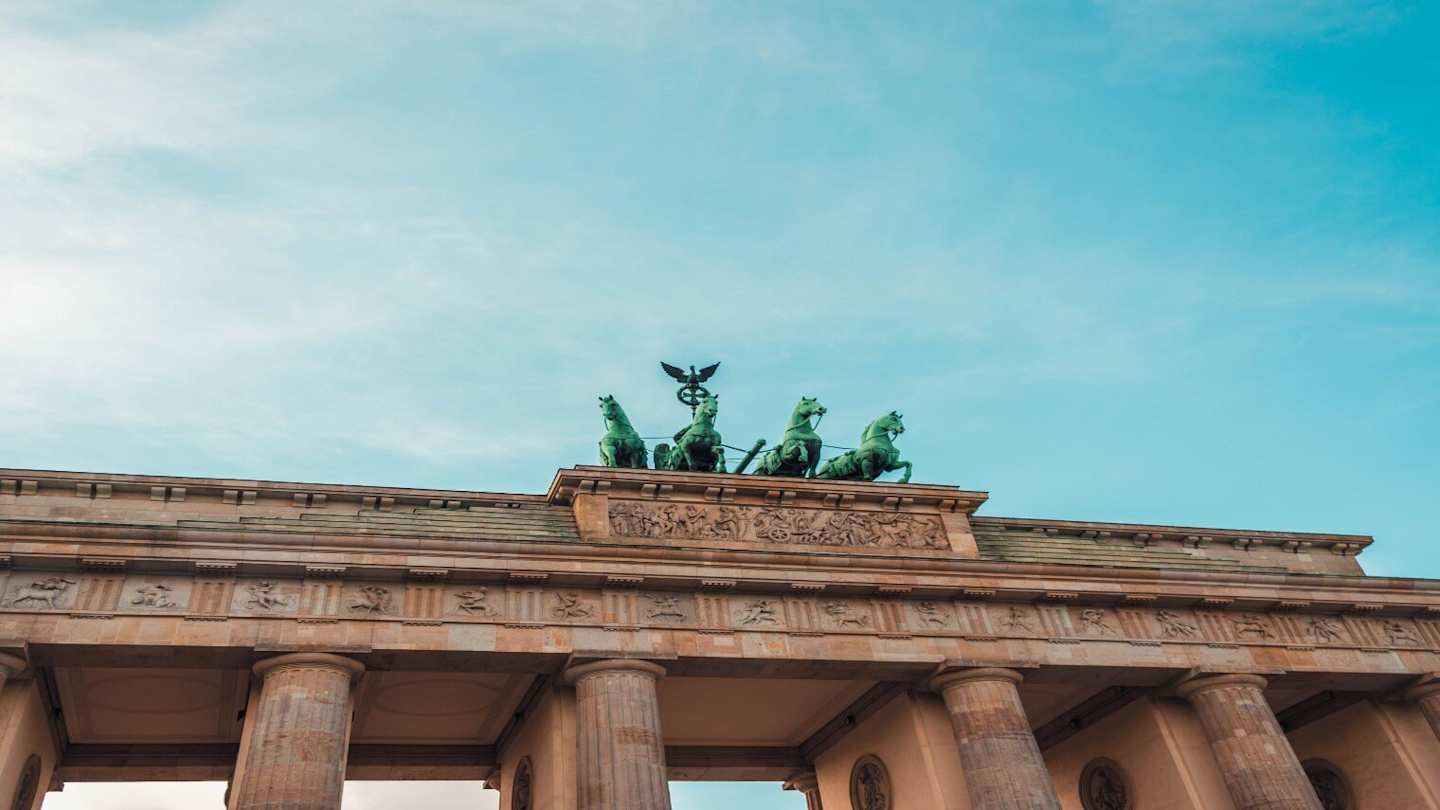
Berlin is truly a city of contrasts. It’s an important European capital with the appeal of a major city yet can sometimes feel much smaller and more manageable. That’s because Berlin has so many distinct neighbourhoods, each boasting a unique look and feel. Whether exploring bohemian Mitte and its shops and eateries or honing in on the history surrounding the East Side Gallery and other politically-charged street art centred in Kreuzberg area, Berlin is rather like an onion. Just when you think you’ve seen enough, it reveals yet another layer of itself. For that reason, we here at Plum Guide are sharing our expert tips on how to see the very best layers of that onion all in one weekend. Ok, we'll stop talking about onions and start planning your weekend in Berlin now...
Saturday
Kick off the first day of your weekend in Berlin with a visit to Alexanderplatz. Located in the central Mitte district, the square is named after former Russian Tsar, Alexander I. Not only is Alexanderplatz one of Berlin’s major commercial areas—more than 350,000 people visit this iconic square daily—there are also several attractions located here like the Fernsehturm (TV tower) and the Nikolai Quarter. Take a good look at the world clock in Alexanderplatz. It’s pretty huge (standing at 10 meters, to be exact), so there’s really no chance of missing it. The clock was erected in 1969 during the GDR regime and designed by Erich John. The structure has 24 sides and each side corresponds to the 24 different time zones around the world. The solar system is also illustrated here; the balls you see rotating are meant to be our planets.
Continue on your self-guided walk to the Brandenburg Gate. Built in the 18th-century in neoclassical design, the monument is now a national symbol of peace and unity; however, it was once the symbol of division between Berlin and Germany during the Cold War. Erected between 1788 and 1791 based on Prussian builder’s Carl Gotthard Langhans designs, he found inspiration in Athens’ Acropolis.
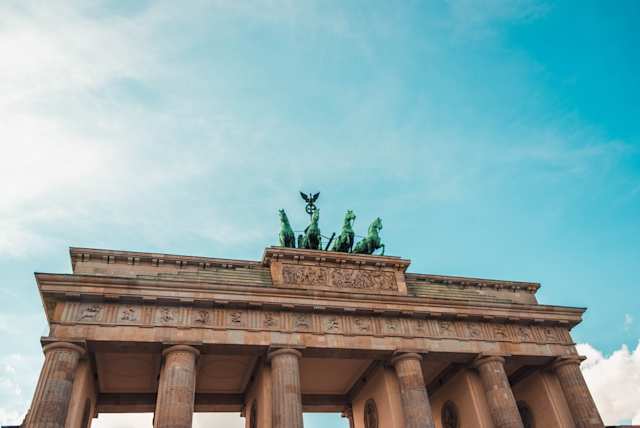
Brandenburg Gate, Germany
With Alexanderplatz and Museum Island under your belt, experience a quieter side of Berlin. Pay a visit to the Charlottenburg Palace. As Berlin’s largest palace, it is a shining example of both baroque and rococo architectural styles. The facade is certainly stunning but we suggest you take a peek inside. It is luxury at its finest, with staterooms, ballrooms and the Silver Vault, which includes tableware of gold, silver, porcelain and glass.
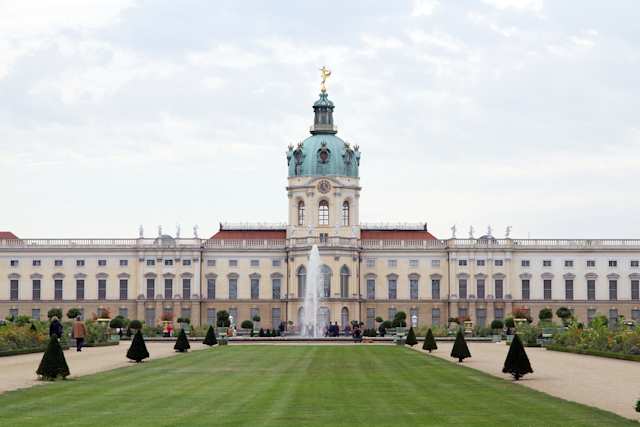
Charlottenburg Palace, Berlin
The accompanying park is also super scenic. French landscape architect Siméon Godeau, a pupil of André Le Nôtre who famously created the grand palace gardens of Versailles, designed the garden in 1697 in baroque style. The outdoor garden is equally impressive. It was originally designed and created between 1697 and 1701 under the direction of Siméon Godeau. Godeau had been a pupil of André Le Nôtre who famously created the gardens of Versailles and as such, chose to design the Charlottenburg gardens in French Baroque style. Wander through the carefully trimmed hedges which work to create geometric patterns throughout the garden.
Whether at home or abroad, Saturday is synonymous for shopping. Kurfürstendamm is hands-down Berlin’s most popular shopping boulevard and is located close to Charlottenburg Palace in the western city centre. The Europa-Center is a high-rise housing 70 shops give or take; there’s also a cabaret theatre. As you stroll along Kurfürstendamm, you’ll pass by all the flagships stores you’re used to seeing back home, as well as some German-based brands and bigger department stores. Kaufhaus des Westens is a major one, and it spans 60,000 square meters and sells close to 400,000 items. Shopaholics, take note. It is Europe’s second largest department store, next to Harrods in London.
Zoos might not be the first thing that comes to mind when envisioning Berlin but yes, there’s a zoo here and there are close to 20,000 animals living there: elephants, gorillas, giraffes and the only panda bears in all of Germany. If you're in Berlin with kids, they will love the petting zoo where they can get up close and personal with their favourite fuzzy friends. Just a short stroll away, you’ll arrive at the Urban Nation Museum for Contemporary Art. The non-profit is one of the city’s newer museums, located in nearby Schöneberg, and well worth a ticket. Berlin has a really fascinating history with both commissioned muralists and graffiti artist and Urban Nation is dedicated to showcasing the vibrant work from street artists across the globe.
When the sun slips below the horizon, gear up for your first night in Berlin – an evening in City West, one of the most popular nightlife areas in old West Berlin. It’s very close to the zoo, in case you want to go straight for the bars after your visit. Speaking of which, 25 Hours Bikini hotel’s Monkey Bar offers amazing views of both the zoo and Tiergarten park. There are several hotel bars as well, such as Lang Bar(great for craft cocktails) and the House of Gin that touts more than 150 varieties of gin. You could, however, enjoy a few drinks from the comfort of your penthouse Plum Guide home You can catch a cabaret show (or comedy show or drama) at the famed Theater und Komödie am Kurfürstendamm. The two theatres have a history going back 90 plus years. Despite some pretty hard times, they’ve come out on top, thanks in part to the dedicated directors and cast.
Sunday
It’s the final day of your weekend in Berlin and we’ve saved the best for last. The Friedrichshain-Kreuzberg neighbourhoods are known for many things, most notably the East German-era buildings, the Jewish Museum and the East Side Gallery. Another main area of interest here is street art. Some are more famous than others, like the iconic Astronaut Cosmonaut mural, and many travellers visit Kreuzberg for the street art scene alone.

man walking with his bicycle near save our earth painted wall during daytime
Bergmannstraße is the main hub of these neighbourhoods and is a great go-to for anyone interested in unique thrift items and overall alternative vibes. There’s a little bit of everything here, from thrift stores selling vintage and second-hand wares to fashion boutiques showcasing Berlin’s unique sense of style. That, plus plenty of cosy cafes and restaurants serving up Thai, Turkish and American cuisine. Prinzessinnengärten is another really cool space. It’s an organic gardening project right in the heart of Kreuzberg. Many of Berlin’s local residents come together to help in some way, whether through gardening, beekeeping or helping with events. In the surrounding streets, there is a slew of restaurants, clothing and record stores.
Of course, you can’t leave Berlin without a proper visit to the Berlin Wall and the East Side Gallery. If you can believe it, 2019 marked the 30th year since the fall of the Berlin Wall. Today, the East Side Gallery is a series of urban art painted along what was once the Berlin Wall separating the east from the west. In 1990 alone, more than 100 artists from over 20 countries came together to decorate the wall with their artwork.
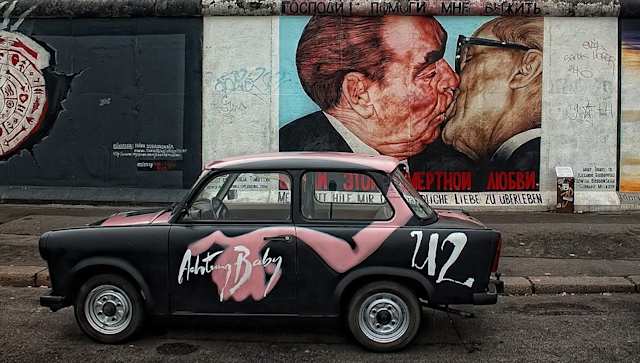
Berlin Wall and the East Side Gallery
Perhaps the most famous of these murals is the 'Fraternal Kiss' — a piece depicting Leonid Brezhnev of Russia and East Germany’s SED Party Chairman Erich Honecker. Quite controversial and equally buzzworthy. While we’re on the topic of the Berlin Wall, here’s a crash course on the real differences between the East and West parts of the city, shall we? One noticeable difference, besides the architectural styles, is the "Ampelmännchen”—that little traffic light man you see when crossing the street.
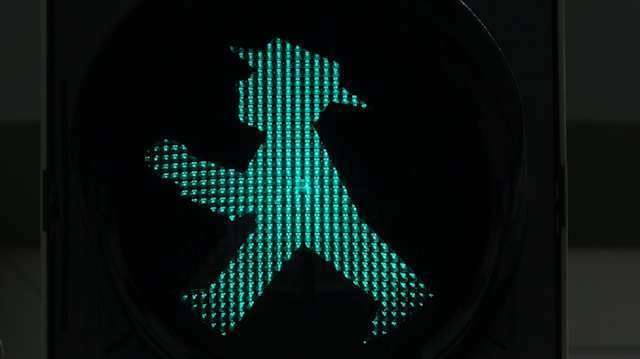
Traffic Light Green Man, Berlin
After a morning of sightseeing, lay low with a lazy lunchtime stroll. We recommend getting some food along Landwehr Canal. For some context, the canal cuts through the heart of Berlin, spanning around 10-kilometers or so. It flows through the Tiergarten, Kreuzberg (where you’ll be coming from), through Neukölln and then finally to Friedrichshain. Tons of restaurants are located along the canal, giving you plenty of meal options. Alternatively, book a boat tour and enjoy a decadent dinner while sailing along the Berlin Spree and Landwehr Canal.
Sunday in Berlin is not complete without some karaoke in the park. Yes, you read that right, hear us out. Watch as Mauerpark transforms from an otherwise quiet oasis into a full-on flea market that attracts 40,000 people. You’ll see all sorts of items up for sale, from old records and musical instruments to plants, clothes and even bikes. Around 3 pm in the afternoon, the flea market ends and karaoke in The Amphitheatre begins. Singer or not, this is a fun couple of hours for sure. Looking for a few last holiday photos of your weekend in Berlin? Well, the double-deck Oberbaum Bridge on the River Spree connects Kreuzberg and Friedrichshain and is one of our favourites (and free) viewpoints in Berlin. What many forget is that the Oberbaum Bridge was once a crossover checkpoint from West to East Germany. Today, there’s a much lighter feel to it, and it’s covered in graffiti and murals.
As you can see, there's a lot to pack into your plans with just a weekend in Berlin. If you'd prefer to take a little bit longer, take a look at our guide to slow travel in Berlin.







